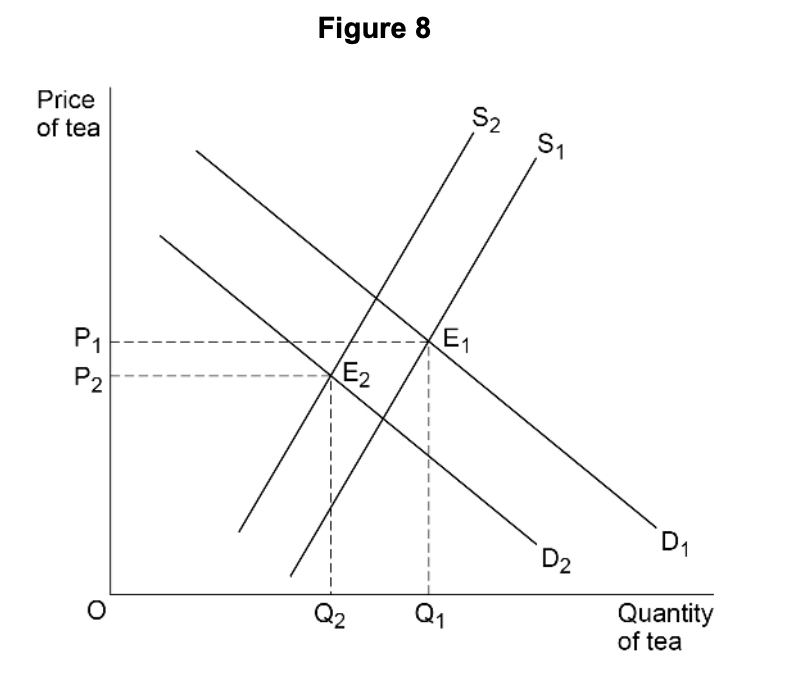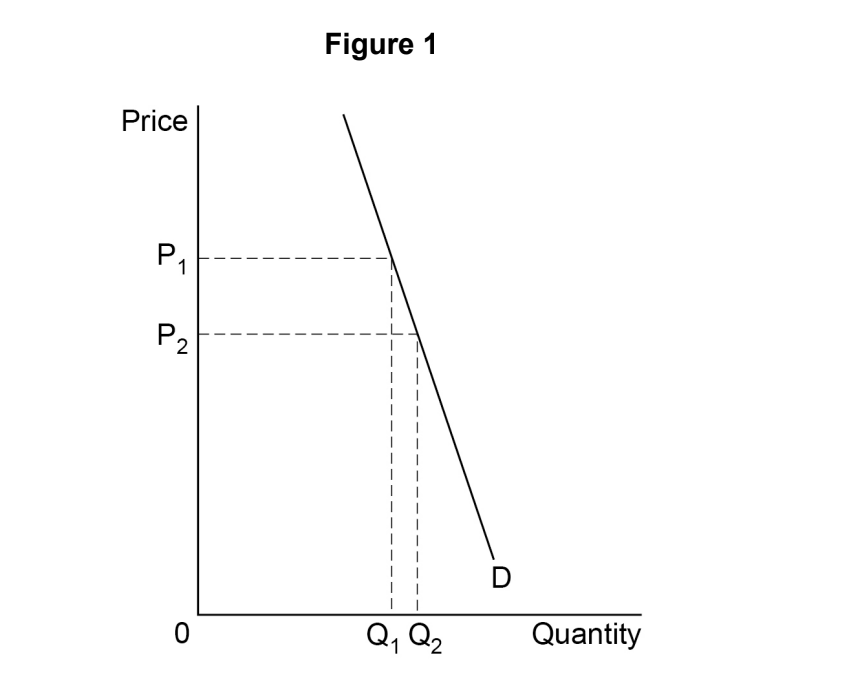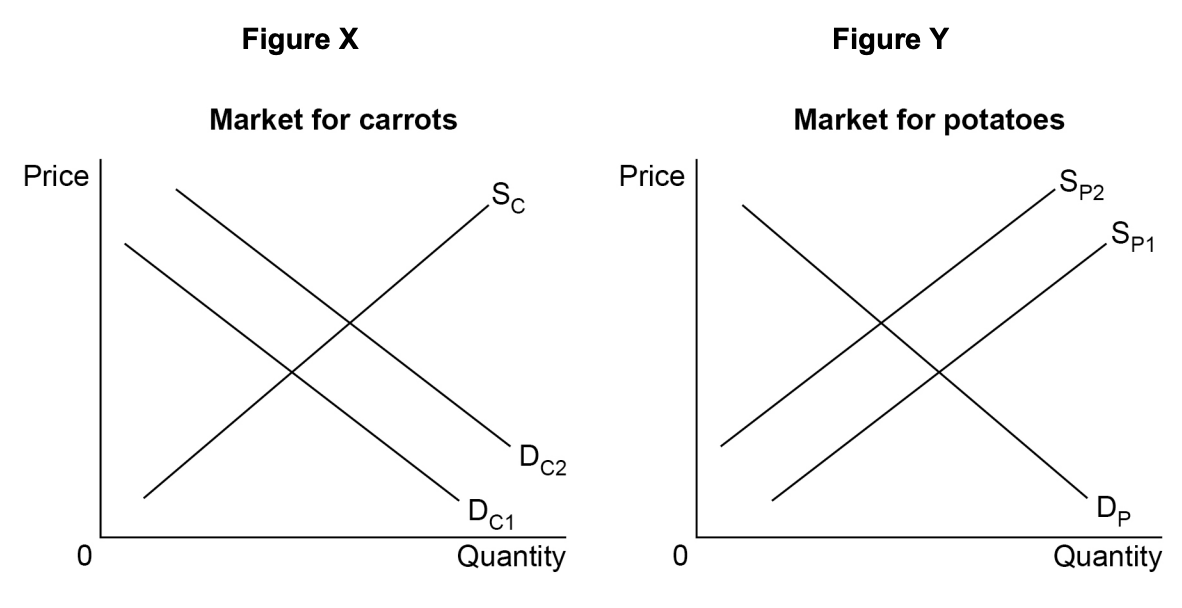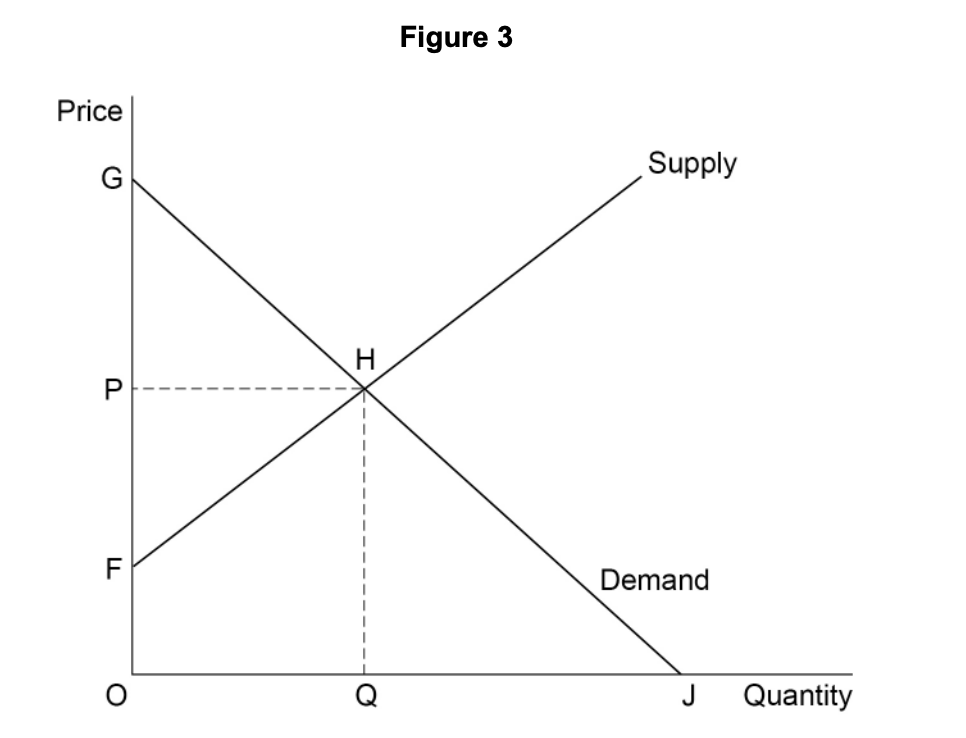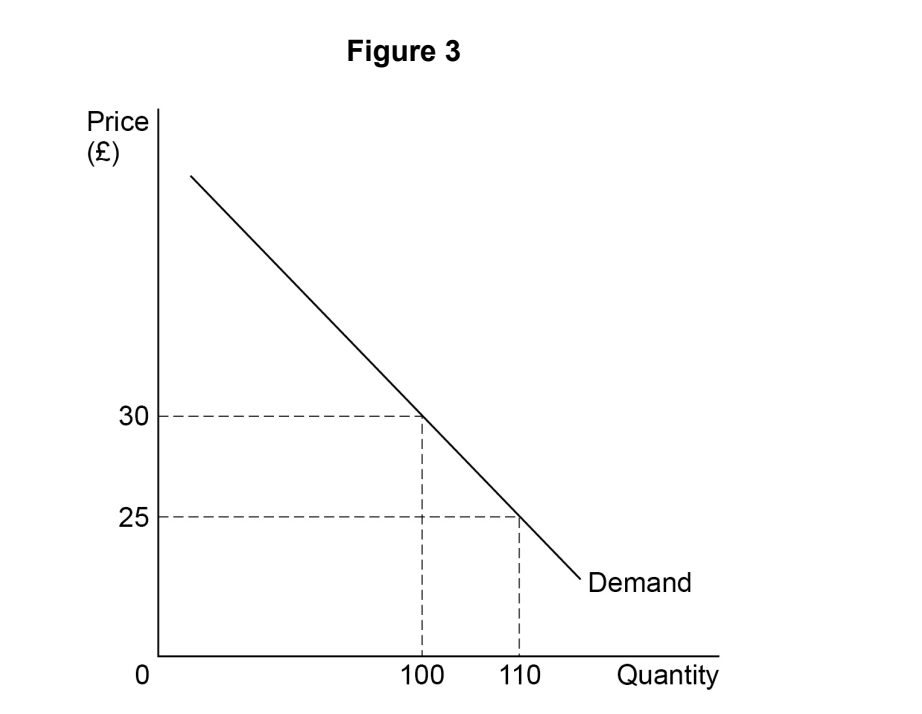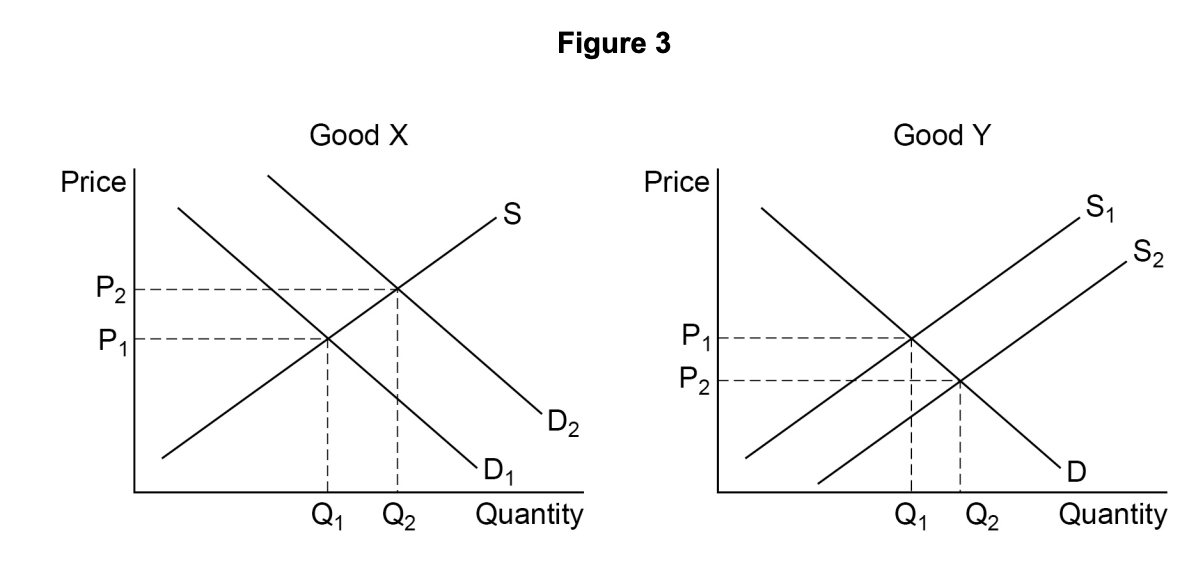Figure 4 shows a firm’s demand (D) curve and its marginal revenue (MR) curve for good X. The firm initially sells OQ1 units of X per day at a price of OP1.
Figure 4

If the firm increases its price by 10%
price elasticity of demand will decrease.
price elasticity of demand will not change.
total revenue will decrease.
total revenue will increase.
Did this page help you?




